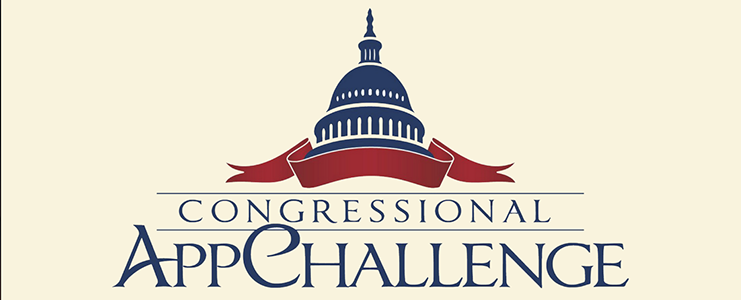— a semi-regular humor column by Maurice Austin —
While many of the wildlife attention-garnering tourist attractions on and about the San Juan Islands focuses on emblematic marine mammals like orca whales and grey whales and sea lions and seals and porpoises and Doe Bay Festival attendees and local real estate agents, minke or elephant or this that whatever, there are certainly other species as emblematic of island life, although perhaps not as exotic, not as wild, not so frequently occupying full-cover spreads in brochures that proliferate exponentially on the ferry Yakima’s brochure rack.
Yesterday, out my kitchen window, I observed a bald eagle swoop and pounce on a something-or-other, maybe got it, maybe not, who knows, eagle stood there for an hour or so, much longer than it took me to finish washing my dishes, sheesh just what kind of a pigsty do you think I live in, anyway? Was finally gone, anyway, when I was bringing the empty and crusted-over cereal bowls in from the bedroom.
Bald eagles have made quite a bounce post-DDT, and eagle-watchers are in full force on the upper Skagit in season, although their preference for rotten fish has been much stymied in that system, the eagles, I mean, not the tourists, since most of the rotten stuff is netted and sold for cat food and fancily-wrapped packages of “smoked keta” in regional casino gift shops, and eggs stripped and shipped to Japan. One year, as I topped the hill between the Chevy dealership and the casino on Highway 20, I was surprised to see an eagle flying with a stick right over the road. Not a stick like a pencil or even broom-sized stick, but a stick like a 6-foot long 2-by-4, hanging straight down, would leave quite a dent in a hood or hole in a windshield, so it’s a good thing it takes them a while to get their claws out of whatever they get them into, I guess.
Another representative of an emblematic island species, a black chicken, has become a resident around the high school and was even the subject of a Viking Voice editorial about…about…well, kind of about the chicken. Plenty of chickens can be found running free around Orcas Island, sometimes quite within reach of unwary Michelins and Goodyears, for as you know, they cross the road, sometimes, for reasons about which we cannot help but to continuously speculate. Keeps the eagles fed, anyway.
Perhaps one day, Orcas Island will live up to its Hawaiian aspirations and if unable to cough up colorful leafy foliage and tame fish that peck peas from between your fingertips with abandon, will at least provide a like number of chickens, many of which contribute to the resiliency of those islands’ local roadways by adding a tarry, feathery mixture to the softened asphalt. Hey—we all do our part, as we’re able.
Of course, the San Juan Island rabbits are as emblematic as they come, European immigrants that they are. As early as 1924, they were undermining buildings on the island, though they currently live a burrowing and borrowed life while the state works to approve Elmer Fudd’s invasive species removal contract, prompting a vitally important question: are they any good as crab-pot bait?
Another animal with a past and present impact on the San Juan Islands is the pig, and no I’m not referring to the recent elections, c’mon I’m above cheap shots like that against our so-called President. Besides the pig of Pig War acclaim—not that pigs actually fought in the war, mind you, noo…much too smart they are for that—that or they got five deferments—why do you keep looking at me like you think I’m writing about the president? Sheesh—there’s the recent pork-belly-flop folk hero Frieda, who was apparently so upset at the cafeteria offerings on the ferry that she took a dip, swam to Orcas, and was trying to hitch a ride to Mijitas, presumably for the Dungeness Crab Enchiladas. So now we know: if pigs could fly, they wouldn’t, they’d swim, of course. Frieda’s plight has even been immortalized in a folk song by Mandy Troxel, and could somebody weigh in with the lyrics, please?
Island sheep too deserve a mention, or if according to one recent report, not just a mention but an actual stopping of the vehicle, and the throwing of a few snowballs, you know, because harassing wildlife is dangerous and illegal, but harassing livestock is like, manly or something. Inasmuch as it’s lambing season, there are a bunch of skinny little knobby-kneed pint-sized sheep-ish shapes circling the matronly ewes with sporadic frolickly head-bumping, their spindly legs making them look more arachnid than Ovis aries. According to the sheep-herder who alerted island residents to the harassment of her sheep, the reason some of the ewes have blue marks on their backs isn’t because of some hilarious paint-ball practice, or because those are the ones that are milked to get blue cheese, but because the ram wears a chest harness with a marking crayon on it, proving that the reason sheep owners have so little shame is due to the 145-day gestation cycle of Ovis aries. Can you imagine such a harness for male bunnies? Crayola stock would shoot through the roof!
Used to be I saw a lot of raccoons on the island, but recently only catch a glimpse now and then of a portly three running from fruit tree to fruit tree (…they have a funny running style…would a mainland coyote see such a spectacle s/he would probably keel over in canine laughter and choke on a recent improperly-digested squirrel). One year, camping at Ozette, about .27 seconds after zipping up the tent, I heard a sciffle and scuffle outside, and pulled the zipper and aimed the flashlight at the food bag hanging from the bear wire, and there was a raccoon on one tree, and two on the other, and two on the wire, one with an arm reaching down toward the bag, all staring at me like I just said “Freeze!” Sheesh, quick as Republican congressmen out to sack the ACA, they were.
Really, seeing a few raccoons in the flashlight beam from the tent is not as bad as seeing, say, your food bag being carted off by the retreating hindquarter of a cougar, or a black bear with cubs, or thirty elk, none thankfully island residents. Heck, it’s not even as bad as seeing a raven pop its head out of the food bag in the morning, pose as if for a shampoo advertisement if shampoo was made of vegetarian spaghetti, and drop straight down, turn around a couple times, and casually waddle off, probably too stuffed to fly. Smart bird.
We make tenuous connections with the other species that surround us, and sometimes that tenuousness takes unpleasant turns. Once while trimming the shrubbery around my little rental, I came across a little nest, with two little eggs, and immediately left off pruning there, was enough pruning elsewhere. A couple days later the small little brown birds that had nested there no longer availed themselves of my feeder, and a check of one of the game cameras posited a reason, catching pictures of a cat on the fence, no cat I’d seen before. Alas I fear the pruning set the little brown birds up for a place on the feline’s menu. Felt bad for those birds—me, a former cat owner who used to think it was cute when my cat left a little brown bird on the doormat, as offering. Would have rather it stuck to mice and rats, of course, which are much less enjoyable than little brown birds, for reasons like disease, for starters. Or that they’ll nest in the glove compartment or instrument panel of your wood-hauler, perhaps. Dear hitchhiker, be advised: watch your toes, because yes this rig is rigged, with peanut butter.
In early Spring, there’s little more enjoyable than watching little brown birds, when you’re in the mood. Or deer. Or Spring’s first little slugs, sliming their way toward your kale, your basil. Be reassured: we’re not alone, on this journey, there are many alongside us, kin of leg and arm and wing and shell and bone that preceded us and that will hopefully outlast us in the end, whatever “end” means. Or, for many species, “meant.”
Vonnegut was terse: “So it goes.” So do we.
“Poo—tee—weet!”
**If you are reading theOrcasonian for free, thank your fellow islanders. If you would like to support theOrcasonian CLICK HERE to set your modestly-priced, voluntary subscription. Otherwise, no worries; we’re happy to share with you.**









This little piggy gotta fly, this little piggy gotta swim!